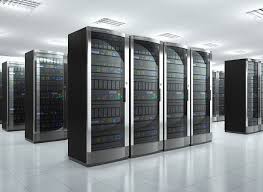Virtual CPD

Data Processing Centres or DPCs are an essential part of many businesses. The implementation of this technological solution has a series of implications and restrictions that make many companies not consider incorporating it. It is necessary to have a space adapted to this technology that has security measures, a controlled temperature and also a system to mitigate possible accidents, among other points to take into account. Due to this need, those companies that already have a traditional DPC are considering more modern and efficient alternatives and those that do not have this technology are already looking for solutions to this need.
The Virtual DPC
A Virtual DPC simulates the execution of a data processing centre in a virtualised environment. In this way, we emulate a DPC within a virtual machine, so the DPC is not linked to a server or physical equipment.
In addition, we can use this technology with all the power of Cloud Computing. This allows us to host a Virtual DPC in the cloud and offer all the benefits associated with the Cloud.
Advantages of a Virtual DPC
The main advantages offered by a Virtual DPC compared to its traditional version are:
Backups: since the DPC runs on a virtual machine, we can create a backup of the entire system and restore it at any time.
Duplication and templates: along the same lines as the previous point, we have the possibility of cloning our DPC or creating a base template for the creation of new data centres.
Lower costs: in addition to not having to make the initial investment in a physical DPC, we will save costs associated with electricity consumption or maintenance.
Scalable: both in terms of resources consumed and the number of active virtual DPCs, the growth possibilities of this technology are not limited by physical equipment.
Maintenance by the provider: we will not have to carry out tasks associated with the physical maintenance of the hardware.
In conclusion, a Virtual DPC in a Cloud Computing environment is very useful both for companies looking to have a data processing centre without having to make a large initial investment, as well as for distributors who want to have a context that allows them to manage multiple data centres.
Rafa & Alba

